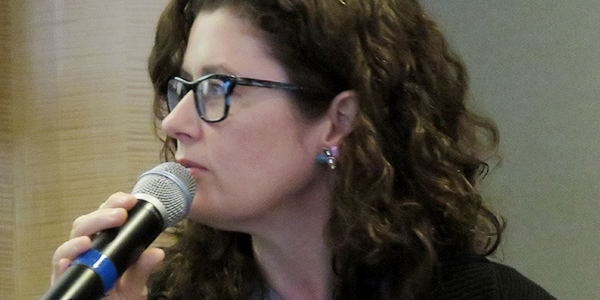According to Connecticut law, the Department of Energy and Environmental Protection (DEEP) must prepare a biennial assessment of future electric needs and plan to meet them. Since 2012, the state’s Integrated Resources Plan (IRP) has taken a holistic look at supply and demand to formulate recommendations for its electricity needs.
A draft of the latest IRP, released in December and the public comment period for which closed Wednesday, is Connecticut’s first evaluation and identification of pathways to achieve a carbon-free electric supply by 2040, as directed through an executive order from Democratic Gov. Ned Lamont.
Connecticut has made significant investments in clean energy and efficiency programs to put the state on a zero-carbon path. Through competitively bid long-term contracts, state ratepayers currently support more than 600,000 MWh/year of grid-scale renewables and more than 9 million MWh/year of nuclear resources. That is equivalent to nearly 65% of the electric consumption by ratepayers of Eversource Energy and Avangrid, Connecticut’s two principal distribution utilities. By 2025, that percentage is expected to increase to 91%, or 24.5 million MWh/year, as newly contracted but not yet constructed, offshore wind and grid-scale solar projects come online.

Connecticut DEEP Commissioner Katie Dykes | © RTO Insider
“The bottom line is that our modeling and our analysis show that a 100% zero-carbon electric supply by 2040 is feasible; it’s achievable,” Dykes said in a recent interview with RTO Insider. “Because of the [resource] investments that we’ve already made, we are already well on our way to meeting that target.”
She added that upgrades in the transmission system and more proactive planning are “critical” for Connecticut and the entire region “to unlock the potential for additional renewable resources, particularly offshore wind,” in the pursuit of decarbonization efforts.
“We’re facing a climate crisis; we’re running out of time; and we know that urgent action is necessary to reduce emissions and prevent the worst impacts of climate change from occurring,” Dykes said.
While the transmission system can support wind and solar, Dykes said the IRP’s modeling demonstrates that intermittent resources will be curtailed in each of the pathways. Thus, “we need to act urgently on upgrading our transmission system to unlock the potential for additional renewable resources,” Dykes said.
Upgrading the transmission system over the next two decades can reduce the amount of clean energy that will be wasted. Dykes said a scenario-based proactive planning process is needed. “We’re going to be plugging in resources in places that the grid has never built out to serve, and at the same time, New England has a terrible track record in terms of paying some of the highest prices per mile for transmission.”
Dykes said that Connecticut has been “very successful” with competitive procurements over the last few years. The capital cost of renewables has been falling, a subject of debate during a NEPOOL Markets Committee meeting in October between a stakeholder and a consultant hired by ISO-NE. (See “Face-off on Offshore Wind,” NEPOOL Debates Parameters for 2025/26.)
“It tells you a lot about the contrast between competitive markets that states have developed around the procurement for long-term contracts of renewable resources and the administratively determined rules in the ISO’s capacity market constructs,” said Dykes, a longtime proponent of reforming ISO-NE wholesale markets. “Essentially, in our competitive procurements … you don’t set those kinds of administratively determined rules around bid reviews where we have to get into the business of determining in advance what the cost of solar is or what the cost of offshore wind should be.”
Dykes said that “every single time” Connecticut has run a request for proposals for renewables, “it’s been a surprise and a shock sometimes to see the pricing that comes in. … The technology costs are coming down in shocking ways. …
“The competitive designs that states have been using toward these renewables procurements ensure that ratepayers are getting the benefits of seeing those prices coming down,” Dykes said. “By contrast … some of the challenges that we’ve had with the capacity market construct is that it relies on administratively determined preconditions and rules that in my view have some discriminatory impacts on the ability for different types of resources to clear that market and be counted towards our capacity requirements.”
DEEP expects to release the final IRP on March 12.


